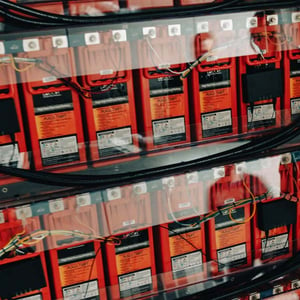
Determining Colocation Power Requirements as Density Increases
There’s a lot to consider when you are selecting a data center colocation provider – location, security, network density, cloud connectivity and support, to name a few. But what about power? And what about the backup power system that keeps your equipment and your business operating, if there’s a disruption to the main source?
With digital transformation driving increasing rack density, the amount of power required is also on the rise. Also, each rack varies in its power needs due to different server specifications; the more powerful the server, the higher the power density. In 2020, the average rack density was roughly 8.4kW, but densities of up to 20kW are slowly becoming a reality for data centers.1
The trend of high-powered servers continues to grow as workloads increase, and the impact on costs associated with power requirements can be significant for colocation tenants, especially when scaling up a deployment.
That makes estimating the amount of power you will need an important part of understanding how to budget for your business needs now and to get a good idea of what to plan for growth.
Calculating Colocation Power Requirements
The formula for calculating the amount of power equipment needs is amps * volts = watts. This formula can be utilized for individual servers or for an entire rack. Simply put:
- Ampere (Amp) – the amount of electricity carried from wires to a device
- Volt (V) – the force that it takes to push electricity from its source to the endpoint
- Watt (W) – amount of power a device uses
To determine the power consumption of a circuit, rack or server room, all existing hardware must be accounted for. There are a few ways to approach this:
- Add up the estimated power draw for each device
- Receive an active readout for real-time power consumption of each device
- Calculate the power draw for the entire room and parse what comes from each device
Most new equipment has a built-in meter that displays power usage or has a faceplate which shows the voltage and amps. If that information is unavailable, you can research the power specifications for your equipment to determine the maximum power usage.
Let’s do some math. Let’s say that the readout on a server shows that it pulls roughly 8 amps and is compatible with 120-volt or 208-volt power (common rating for three-phase power). These values can be input into the formula to determine the power draw of the equipment:
If there is additional equipment, the same formula can be applied, and added to the rest of the equipment to determine the total power draw required per space.
Data Center Power and Billing Basics
The main power source for most data centers is the municipal electrical grid, although some supplement that energy with alternative sources like wind turbines. One or multiple transformers ensure that electricity is the right voltage and current. After that, the power hits the uninterruptable power supply (UPS) system which distributes clean electricity to circuit breakers that deliver power to specific racks and offers redundancy in the case of an outage.
Migrating your infrastructure offsite and into a data center can be a large step for your company. Space is a factor in determining colocation costs with tenants choosing from single circuits, quarter racks, half rack and even server rooms.
Similarly, colocation costs are also dependent on your power needs. Typically, there are options for paying the bill.
- Flat rate billing means that you’ll pay the same amount per circuit provisioned for your device per month, every month. That means the cost is the same whether you use some or all of your allocated capacity.
- Allocated billing allows you to use a fixed amount of power that you’ve committed to each month.
- Metered power billing is based on the actual power usage.
Deciding on the method of payment is largely dependent on the power and space requirements for your devices, and you can work with a colocation provider to find the solution that best fits your budget.
Power is becoming increasingly more important as colocation facilities support higher power densities and make smaller footprints in the space required for servers, switches and patch panels. And as we all know, rising energy costs are affecting everyone, including data center customers.
Compare CoreSite to Your On-Premises Power Costs
When you are evaluating your power and space requirements for colocation, contact us to estimate your costs. Our Solution Architects can help you determine the best data center deployment for your digital business today, and offer a roadmap for scaling up as your needs change and new technologies, like AI, are integrated into your hybrid IT strategy.









